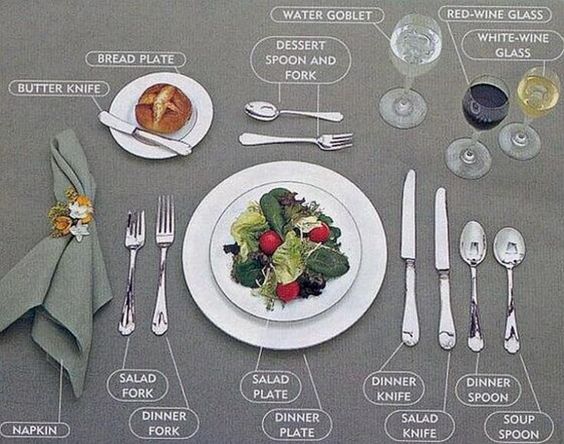Whether you’re attending a formal dinner, a business lunch, or simply dining with friends, knowing the basic rules of dining etiquette can enhance your experience and leave a lasting impression. Here are some essential tips to navigate any dining situation with confidence and poise.
1. Understanding the Place Setting
One of the most common challenges is figuring out which utensils to use and when. Here’s a quick guide:
- Forks are placed to the left of your plate, and knives and spoons to the right.
- Start from the outside and work your way in as each course is served.
- The small bread plate is on the upper left, and your drinks are on the upper right.
2. Napkin Etiquette
- As soon as you are seated, place your napkin on your lap.
- If you need to leave the table temporarily, leave the napkin on your chair.
- At the end of the meal, place the napkin neatly to the left of your plate.
3. Handling Utensils
- In formal settings, use the continental style of eating: hold the fork in your left hand and the knife in your right, cutting your food as needed and eating with the fork still in your left hand.
- For more casual dining, the American style is also acceptable: cut your food with the fork in your left hand, then switch the fork to your right hand to eat.
4. Don’t Start Eating Until Everyone is Served
Wait for all guests to be served before you begin eating. In smaller gatherings, it’s polite to wait for the host to start eating first. This shows respect for the other guests and the host.
5. Pace Yourself
- Eat slowly and pace yourself with the rest of the table. This allows for conversation and shows good manners.
- Take small bites and chew quietly. Avoid talking with food in your mouth.
6. Drinking Etiquette
- Hold your wine glass by the stem to avoid warming the wine with your hands.
- When toasting, make eye contact with each person and sip, don’t gulp.
7. Polite Conversation
Engage in light, friendly conversation during the meal, and avoid controversial topics like politics or religion. Mealtime is for connection, not conflict.
8. Handling Mistakes
- Accidents happen—if you spill something or drop your utensils, stay calm. Quietly ask the waiter for assistance or discreetly handle it yourself if it’s minor.
- If you don’t like a dish or can’t finish your food, simply leave it on your plate without drawing attention to it.
9. Tipping Etiquette
- In most countries, tipping is customary at restaurants. In the U.S., aim for 15-20% of the total bill, depending on service.
- In some cultures, tipping may not be expected, so it’s important to know the local customs when dining abroad.
10. Ending the Meal Gracefully
- Wait for everyone to finish before leaving the table.
- Thank your host or waiter for the meal, and if dining with friends or colleagues, offer to contribute to the bill if appropriate.
By following these basic guidelines, you can navigate any dining situation with ease and confidence. Proper dining etiquette not only reflects good manners but also shows respect for the people you are dining with.
Read more: Mexports by Susana Molina

